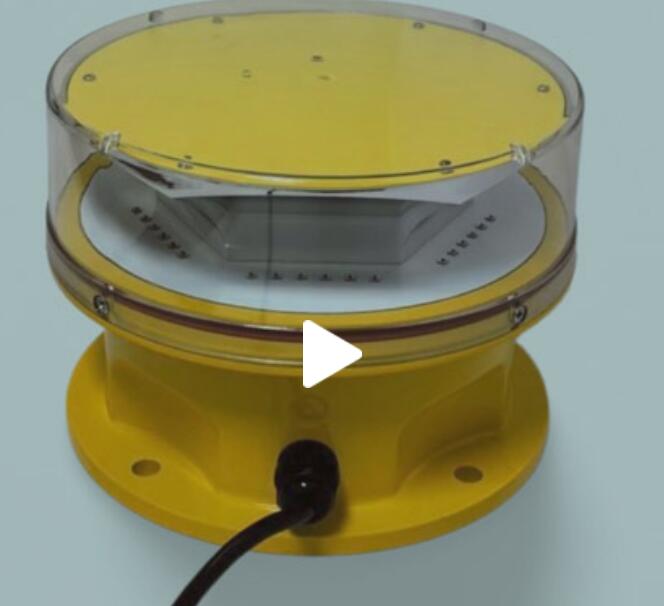L-864 Beacon: The Medium-Intensity Guardian of Aviation Safety
In the hierarchy of aviation obstruction lighting, the L-864 beacon occupies a critical middle ground - providing essential visibility for structures between 150 and 500 feet. These white strobe systems serve as vital visual markers that bridge the gap between low-intensity red beacons and high-intensity warning lights. This article examines the technical specifications, operational requirements, and modern advancements that make the L-864 beacon an indispensable component of airspace safety infrastructure.
Technical Specifications and Compliance
Key Performance Parameters
Height Application: 150-500 feet (45-150 meters)

Light Output: 20,000 candela minimum intensity
Flash Characteristics: 40 flashes per minute (±5%)
Beam Distribution: 360° horizontal coverage
Day/Night Operation: Automatic intensity adjustment
| l 864 beacon |
Regulatory Framework
The L-864 beacon must comply with:
FAA AC 70/7460-1L standards
ICAO Annex 14 requirements
Local aviation authority regulations
Environmental protection guidelines
Primary Applications
Urban Infrastructure
Mid-rise office buildings
Hospital complexes
University structures
Telecommunications
Cell phone towers
Broadcast antennas
Microwave relay stations
Industrial Facilities
Wind turbines
Power plant stacks
Refinery structures
Technological Evolution
Modern LED Systems
Contemporary L-864 beacon units feature:
75% energy reduction vs traditional xenon strobes
100,000+ hour operational lifespan
Instant full-intensity illumination
Precise flash synchronization
Smart System Integration
Remote monitoring capabilities
Automated fault detection
Cloud-based performance tracking
Predictive maintenance algorithms
Enhanced Durability
Aircraft-grade aluminum housings
Impact-resistant polycarbonate lenses
Corrosion-proof mounting hardware
Wide temperature operation (-40°C to +70°C)
Installation Best Practices
Optimal Placement Strategies
Top-most accessible point
Clear of architectural obstructions
Proper lightning protection
Correct angular alignment
Mounting Solutions
Side-mount configurations
Top-mounted installations
Guy wire attachments
Temporary clamp-on options
Maintenance Protocols
Quarterly visual inspections
Bi-annual photometric testing
Annual cleaning regimen
Component stress evaluation
Operational Advantages
Safety Benefits
94% reduction in obstruction-related incidents (FAA data)
Enhanced pilot situational awareness
Improved low-visibility performance
Reduced wildlife disorientation
Comparative Benefits
Lower operational costs than L-865 systems
Greater visibility than L-810 lights
Reduced light pollution versus continuous illumination
Minimal maintenance requirements
Emerging Innovations
Sustainable Solutions
Solar-hybrid power systems
Energy-efficient LED arrays
Recyclable material construction
Advanced Technologies
AI-powered performance optimization
Integrated radar reflectors
Bird-friendly flash patterns
Regulatory Developments
Potential intensity adjustments
New synchronization requirements
Enhanced cybersecurity for smart systems
The L-864 beacon represents an optimal balance in aviation obstruction lighting, providing sufficient warning illumination without excessive energy consumption or light pollution. As urban landscapes continue evolving and air traffic density increases, these medium-intensity systems will remain crucial for maintaining safe separation between structures and aircraft.
Future developments in L-864 beacon technology will likely focus on smarter monitoring capabilities, greater energy efficiency, and improved environmental compatibility. By implementing and maintaining these systems according to best practices, facility operators contribute significantly to global aviation safety while meeting all regulatory obligations. The ongoing refinement of L-864 beacon standards ensures they will continue protecting airspace well into the future.
